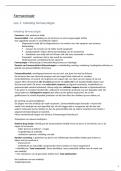Samenvatting
Talent Development & Creativity Summary of Dawes (Week 3): The Robust Beauty of Improper Linear Models in Decision Making
Summary of: Dawes, R. M. (1979). The robust beauty of improper linear models in decision making. American Psychologist, 34(7), 571–582.
[Meer zien]





